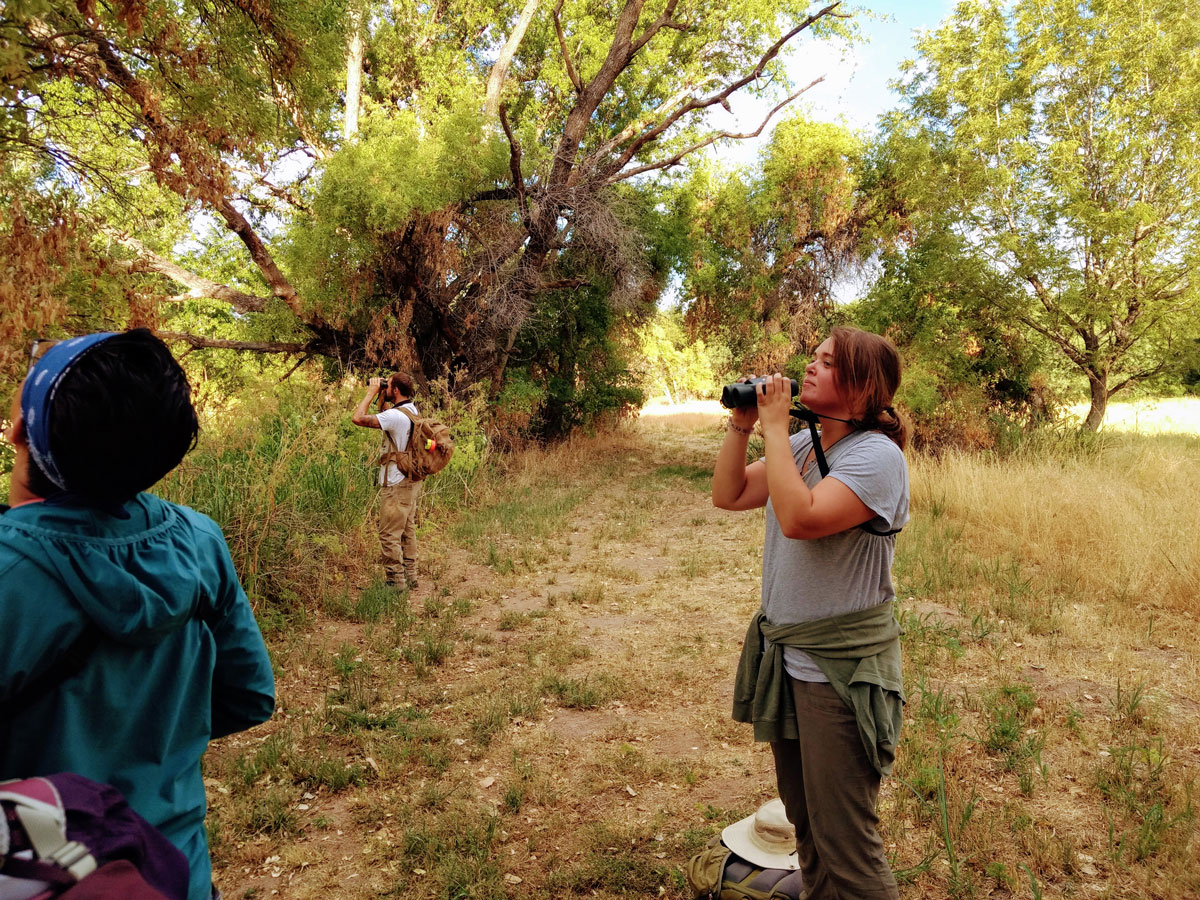Learn
By Elaine Nichols, Habitat Restoration Coordinator.
Thursday afternoon Tracy and I hit the road headed to Patagonia in southeast Arizona for another survey training. Having only been south of Phoenix once, I was excited to see this part of the state and to learn about the Western Yellow-billed Cuckoo.

Throughout the training, we learned about the natural history of the cuckoo and how to identify it using call playback and sight. We learned many facts that make the cuckoo a pretty interesting and unique bird. One fun fact that stuck with us was that the cuckoo females are believed to be the ones who call. Historically, people who study birds have assumed that males call to attract females. A new study by Shannon McNeil, who presented at the training, shows that females call too, and is currently indicating that only females make calls. New information about birds is always emerging and it is very exciting to see old assumptions challenged and studied scientifically.
We also learned about the type of habitat where cuckoos typically nest and breed. Cuckoos usually nest in riparian habitats along streams and rivers throughout the southwest. They prefer riparian forests that have varying levels of growth. This means they need an area that is both free flowing to promote new growth and has diverse plant species to allow for varying tree heights. Cuckoos have been detected by surveyors along the Verde River and its tributaries in areas just like this.

Visiting the Paton house in Patagonia to see hummingbirds and butterflies!

The major reason that these birds are listed as threatened is loss of habitat. Water management practices, like dams and diversions for example, have contributed to the loss of cuckoo habitats. These practices, coupled with tamarisk invasion to the point where tamarisk is basically the only species within the area, have been pointed to as the cause for the decline in cuckoo populations throughout the southwest.

Although we were in Patagonia visiting the beautiful Sonoita Creek Preserve to learn about the cuckoo, I couldn’t stop myself from thinking of the Verde River. Because of the free flowing nature and beautiful biological diversity of the Verde River, the cuckoo is still able to breed here. Water conservation and habitat restoration work done by our invested partners and stakeholders throughout the Verde watershed has prevented us from ending up like other rivers that have had major water losses and extreme tamarisk infestations.
The cuckoo is a reminder of what a vital place the Verde River is to so many species of plants and animals. It is crucial that we humans of the Verde Valley continue to work to restore and maintain a healthy Verde River ecosystem for the cuckoo, otters, fish, mountain lions, insects, willows, herons, beavers, sycamore, bears, bacteria.. and everyone in between.
For sources and more information on the Western Yellow-billed Cuckoo visit: https://www.fws.gov/southwest/es/arizona/Yellow.htm
Cover image: Elaine Nichols attempting to catch a glimpse of a Yellow-billed Cuckoo.






